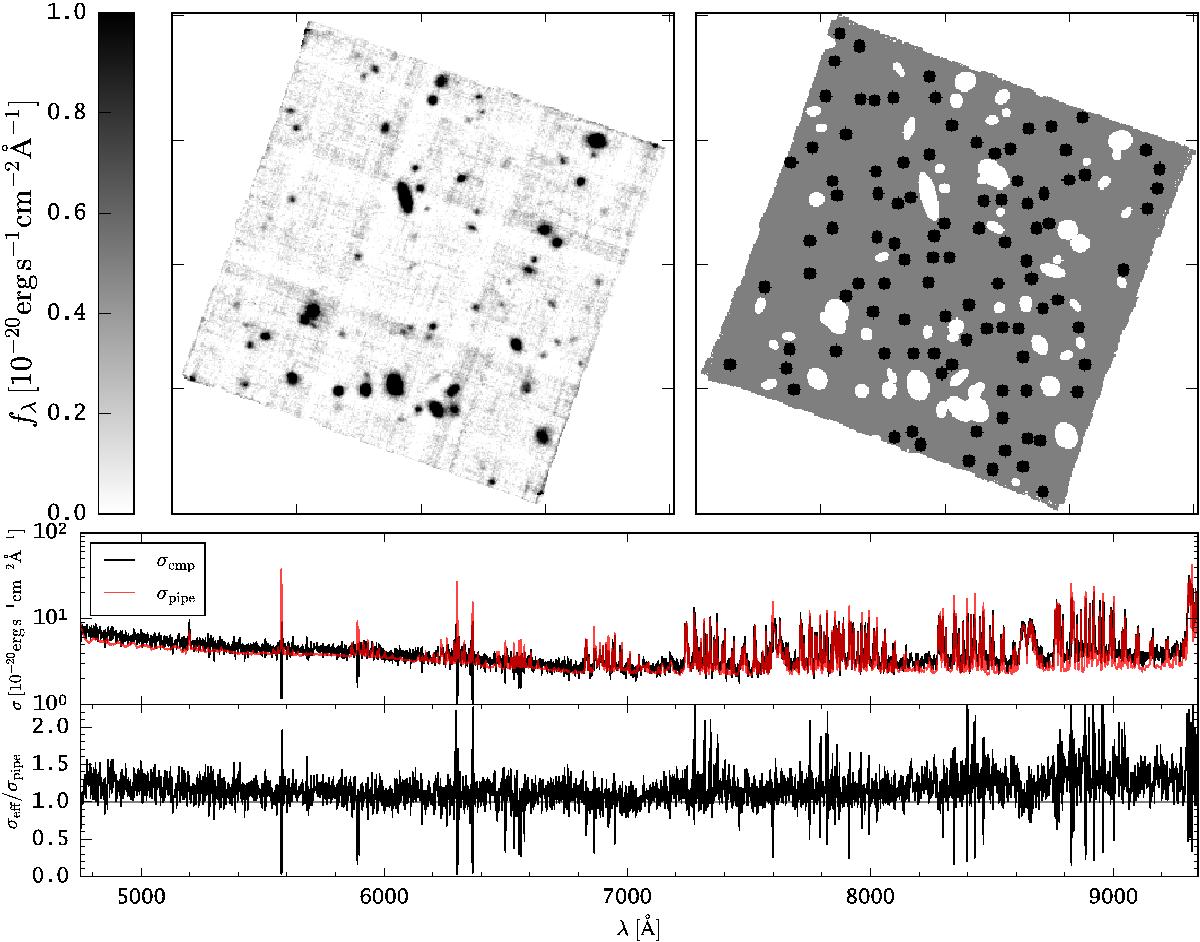Fig. 2

Illustration of the empirical noise calculation procedure. Shown is the case in the MUSE-Wide pointing MUSE-candels-cdfs-06. The top left panel shows a white-light image created by summing over all spectral layers and subsequent division by the spectral range. In the top right panel we show the 100 random 2′′ diameter apertures (black) and the avoided regions (white) because of the presence of continuum bright objects (sources with mF814< 25 mag in Guo et al. 2013). In the bottom panels we compare the width of the distribution of the flux values extracted in the 100 apertures for each spectral layer σemp (black curve) normalised to one spectral pixel to the corresponding aperture average from the pipeline produced variance cube σpipe (red curve).
Current usage metrics show cumulative count of Article Views (full-text article views including HTML views, PDF and ePub downloads, according to the available data) and Abstracts Views on Vision4Press platform.
Data correspond to usage on the plateform after 2015. The current usage metrics is available 48-96 hours after online publication and is updated daily on week days.
Initial download of the metrics may take a while.


